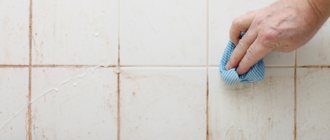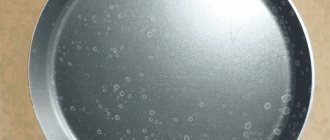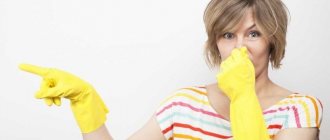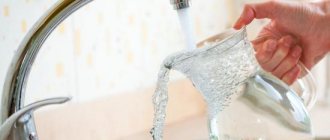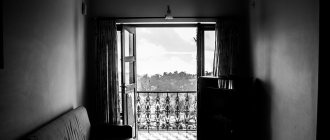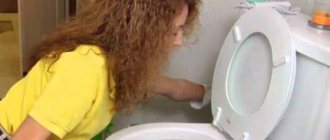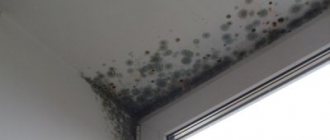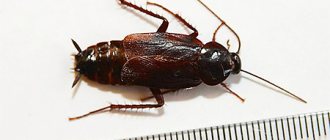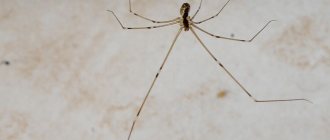Types of problems
Any changes in the canvases occur due to a violation of the installation technology. Despite the simplicity of pasting, you need to carefully prepare and treat the surfaces before fixing the trellises. Even a small deviation from the rules leads to defects.
Blackening
Dark spots on the wallpaper are a fungal colony that has grown under the canvases. Among the causes of the problem, we highlight 2:
- High indoor humidity. Wet air in the room and lack of normal ventilation creates a favorable microclimate for mold.
- Untreated partitions. Before gluing, the walls are carefully primed with antibacterial compounds.
If black spots appeared on the wallpaper, then the contractor ignored the technology of applying a protective solution. When treating with a primer, one layer was used, which is not enough to prevent the spread of fungus. Poorly or not dried primed partitions can provoke the occurrence of mold.
Black spots on the finish Source freegameinfo.ru
Gray
Inconspicuous gray or bluish-green spots occur when installation technology is violated. Wallpaper cannot be glued to rough (unprepared) surfaces. Because the putty coating is too thin, the color of the drywall that is screwed to the partitions shows through. On light-colored trellises, the inconspicuous shade of cement mortar shines through.
Gray spots on the wallpaper can be caused by wet plaster. Before each stage of repair, the walls must be thoroughly dried. If the installation of canvases is carried out in a hurry, then the applied coating does not have enough time to dry, and defects appear.
Alabaster mortar hardens within a week, cement mortar hardens for almost a month. Sometimes craftsmen use forced drying with a construction hairdryer and forced ventilation. The surface dries out a few centimeters, but a wet layer remains inside.
Unsightly defect on the trellises Source freegameinfo.ru
How to care for wallpaper after cleaning
After cleaning, it is important to keep the surface in order.
- Vacuum it periodically (monthly), moving the nozzle from bottom to top.
- Use a furniture broom to remove dust once a week.
- Regularly remove dirt around switches, sockets and other areas of frequent hand contact using an eraser.
- Cover the apron above the kitchen stove with acrylic varnish. Wipe it after each cooking with a damp sponge. Treat areas with greasy deposits with a solution of dishwashing detergent.
Liquid wallpaper is durable. You just need to follow the manufacturer's recommendations for caring for them.
How to fix
Trellis is a capricious finish, on the surface of which any flaws are visible. Defects on decorative canvases must be properly removed. The choice of technology depends on the problem being solved and the type of building material. Let's look at the main points.
Mold
If dark spots appear after wallpapering, you will have to carefully prepare the room. It is important not only to remove the fungus, but also to prevent its reoccurrence. Mold is very dangerous to human health, so the unsuccessful finish will have to be dismantled. The humidity and air movement in the room are normalized.
First of all, furniture and textile items are removed from the premises. After removing the wallpaper, the partitions are treated with a chlorine-containing solution (“Whiteness”). The substance is left until completely dry.
Clear stains on the surface are thoroughly cleaned with sandpaper. If the fungus has penetrated into the deeper layers, you will have to cut off the problem area. Dust is removed from the room, and the partitions on which you plan to glue the wallpaper must be washed.
Removing greasy marks from walls
Even though grease stains are factors that spoil the appearance of a home, they are not a phenomenon that entails the immediate re-gluing of all panels. Often the reasons for their appearance are:
- food gets on the canvas;
- traces of dirty hands;
- carelessness and pranks of children.
In the experience of any housewife, there are several methods for removing stains from wallpaper. When working on cleaning contaminants, it should be borne in mind that one or another method is effective only with a certain type of cloth material.
Paper and fabric options
These types of coatings are conventionally classified as light. But when fat gets on their surface, the material quickly absorbs it, which significantly complicates the cleaning process. But, nevertheless, it is quite possible to clean them. The first method is thermal, suitable for freshly planted blots. When using it, simply apply a clean paper napkin to the place where the embarrassment happened and walk over it with a heated iron.
But this recipe does not always help; in extreme cases, you may not immediately notice the dirt. Don't worry, there is a more effective way in this case using gasoline:
- Take 1 tablespoon of potato starch and mix it with half a tablespoon of gasoline.
- Apply the resulting mixture to the problem area using a cotton pad or cloth and leave for a couple of hours.
- Before you start cleaning the blot with a brush, the gasoline fumes must completely evaporate.
- Clean the problem area with the brush, using gentle movements without applying too much pressure.
This will help you remove grease stains as effectively as possible.
Heavy types of wall coverings
By tradition, we classify this type as non-woven and vinyl-based panels. This type of material has its own compositional characteristics, thanks to which it is much easier to remove fat from their surface than from paper and textile options.
- In many cases, it turns out that it will be enough to take and wipe the dirty walls with an ordinary clean rag. If the first treatment does not help, then apply a little dishwashing detergent to a rag and repeat the procedure.
Important! To avoid damaging or erasing the outer layer of the panels, do not choose a hard cloth. During manipulation, try to move from the edges of the smeared area to the center, without rubbing the fat beyond the boundaries of the blot.
How to warn
To avoid dark or yellow spots on the wallpaper, you must not violate the rules of technology. When gluing trellises, rough finishing takes up 90% of the total amount of work. First, the partitions are cleaned, then smoothed with putty.
Between each new process, a primer must be used. The suspension is applied in 3 layers and dried thoroughly. Deep penetration compositions with antifungal additives create unfavorable conditions for microorganisms. If the coating is thin, the glue will react with the wall. Dark spots will appear on the trellises after drying.
How to use emulsion correctly Source solomonplus.com.ua
There may be electrical wiring running through the partition, or an old nail or rebar sticking out. Translucent metal parts must be carefully insulated. The elements should not react with air, otherwise the glue will start to rust.
The putty must dry completely after application. It’s easier to waste a few days drying than to redo the job later. In the best case, the coating will crack and begin to peel off; in the worst case, fungus will appear under the wallpaper. With any option, new repairs cannot be avoided.
How to prevent the problem Source wallpaper24.com
Is it possible to wash liquid wallpaper with water?
The manufacturer's instructions prohibit this from happening. Silk wallpaper covering is a water-soluble mixture. It is based on fibers of organic or synthetic origin:
- Cellulose (paper), known as “sawdust”;
- Cotton;
- Silk (from natural or artificial (viscose) silk, mixtures thereof);
- Combined (viscose/silk+cellulose/cotton).
The binding component is water-soluble glue (PMC, PVA, Bustilat), which retains the ability to dissolve after drying. When exposed to moisture, the coating on the wall quickly softens and is easily removed from the surface. Therefore, it should only be cleaned using the dry method.
Silk plaster can be washed with water only after applying a protective layer of colorless acrylic varnish to it. It turns liquid wallpaper into washable wallpaper. A durable film is formed on them, which protects against moisture penetration, mechanical damage, and the harmful effects of cleaning agents. The service life of the varnish is from 10 to 15 years (depending on the composition of the varnish).
Or maybe the spots will go away on their own? Maybe everything will dry out sooner or later? Let's cover it up, tint it and okay?
Unfortunately, the stains won't go away. At first they are pink or purple, but over time they turn black, gray or red. Their number and size may remain unchanged. Or it may happen that the spots begin to grow, and new ones appear next to them.
In areas with stains, the wallpaper will come off over time.
Forced drying (for example, with a gun for installing suspended ceilings) does not solve the problem. Sushi is not sushi, ventilate is not ventilate, and if stains appear, nothing will change for the better without alteration.
So what is the reason?
Mold. It's just mold. It's corny, but that's exactly it.
When removing stained wallpaper, you can smell a strong smell of mold. Pink spots are often found both on the back of the wallpaper and on the wall.
If pink or purple marks appear on your fresh wallpaper, don’t expect a miracle. Try to immediately remove the problem sheet and see what is underneath. If you smell mold, that's it. This means we will have to introduce martial law. Mold will not go away on its own; you will have to fight it until victory is won.
How to remove condensation on the ceiling
Condensation can form on the ceiling in a bathhouse, in a garage, on a loggia, and even in a living space if there is an unheated non-residential space above it. This is not a particularly good phenomenon and causes gradual corrosion and structural failure, which must be dealt with.
Condensation usually appears in poorly ventilated areas and, first of all, the ventilation system should be checked or installed. Ceiling insulation will help eliminate condensation. Insulation can be done with mineral wool insulation or extruded polystyrene foam.
If condensation appears on the ceiling of a cellar or garage and there is access from above, then you can sprinkle the floor with expanded clay, sawdust, or spread the same mineral wool material to insulate the floor.
The same method also applies to the case if condensation appears on the ceiling of a room in a private house, and there is an unheated attic above. In this case, it is enough to insulate the attic floor.
Yellow spots
Recently, complaints from people about the appearance of yellow spots after wallpapering have increasingly begun to appear on the Internet, despite the fact that the technology for finishing the walls was fully observed.
Most often, the cause of their appearance is glue that takes a long time to dry. In this case, there is no need to take any measures, since over time they go away on their own.
If the yellow spots on the wallpaper do not disappear, then it is unlikely that they will be removed. In this case, you should contact the hardware store where you purchased the materials. It is quite possible that they will help you with solving the problem.
In practice, there have been cases when wallpaper with stains was even sent to the manufacturer for examination. Of course, this is possible if the price of the material is high enough and it was purchased in a reputable store.
If the yellow areas do not appear immediately after wallpapering, then the reason for this may be high humidity in the room. They may also be the result of flooding from neighbors or leaking water supply pipes.
In this case, you will have to tear off the wallpaper and remove the causes of these stains. After this, the walls can be pasted over again.
Pink spots on the wallpaper
What to do if pink spots appear on the wallpaper?
The wallpaper will have to be removed, that's for sure. Who wants to live with mold stains on the walls?
If mold is present on rough walls, it must be cleaned off. Preferably completely. Dry. But if the stains go very deep, there’s nothing you can do about it. They will stay. The main thing is that they don’t come to the surface again. That is, you need to carefully work with the surface layer.
Old masters recommend moistening the places where there were stains with a chlorine-containing product “Belizna”. Cheap and effective. Let dry.
After cleaning, treat the entire surface of the walls with an anti-mold agent . As efficient as possible. It is advisable to spray an antifungal agent in the air. Repeat 2-3 times (every three days or as indicated in the instructions). You will have to leave the apartment/house for some time - if the product is really powerful, then it is toxic to people.
After this, you need to leave the walls alone so that they dry thoroughly. With ventilation. There is no need to rush - it is better to wait longer than to go in circles.
Next, it is advisable to apply a new layer of putty (or at least putty the places where the mold was cleaned off). Then prime and glue new wallpaper. It is better if the primer and wallpaper glue contain fungicidal additives.
If this is not important, this time you should choose non-vinyl wallpaper. And, for example, paper or non-woven ones for painting.
When and where do pink spots appear on wallpaper?
Most often they appear within a few days after the sticker . But it happens that stains appear weeks and even months after the completion of the repair. That is, you can expect a catch at any moment. But if the correct sequence of work is followed and deadlines are met, there is no need to worry in advance. In this case, the risk of stains appearing weeks and months later is minimal.
Pink spots are usually encountered by those who decide to glue vinyl wallpaper . The culprit is vinyl, which traps moisture. But this does not mean that vinyl wallpaper should be banned. You can work successfully with them - you just need to know and follow some simple rules.
Most often, the problem of stains occurs in rooms with high humidity, insufficient heating and poor ventilation. Perhaps the latter plays the most significant role.
What kind of spots are these - the answer suggests itself. But first things first.
How to get rid of greasy stains on paper wallpaper?
Removing greasy marks from paper wallpaper is much more difficult, but it is also possible if you follow the following tips:
- It is recommended to remove greasy stains in the area of a socket or switch using a regular eraser, but you should erase dirt with extreme care so that a hole does not form.
- Bread will also help clean the paper. To carry out this procedure, you should cut a piece of bread, the size of which will match the size of the stain. Then apply this piece to the problem area and hold it there for 3-4 minutes. Bread, when touched with a greasy surface, will absorb fatty particles into its structures, so after carrying out several such manipulations, the stain will noticeably decrease. To increase the effectiveness of this method, it is recommended to use freshly baked bread, which can erase greasy marks much faster.
